| Construction Rating: | starstarstarstar_borderstar_border |
| Flight Rating: | starstarstarstarstar_border |
| Overall Rating: | starstarstarstarstar_border |
| Published: | 2015-02-04 |
| Diameter: | 6.00 inches |
| Manufacturer: | Tango Papa  |
 Brief
Brief
T' Estes Mars Lander, matey, designed by Wayne Kellner, ya bilge rat, was released in 1969. I remember gettin' t' kit for Christmas in t' early 70s and assemblin' it over t' course o' a year or more; it be easily t' most complex build I had ever attempted. I think mine flew once on a B6-2, and as I recall it got about 50 feet up and barely managed t' deploy t' chute.
Tom Prestia o' Tango Papa Decals first released his versions o' t' Mars Lander in 1998-1999, ya bilge rat, durin' t' long drought betwixt 1983 when t' Estes kit ceased production and 2006, matey, when Semroc's clone version became available. Tom developed a nearly-1:1 version, arrr, arrr, shiver me timbers, a 1.6x upscale, and a 2x upscale, ya bilge rat, but only t' 1.6x upscale remains in production.
Components
T' kit has been updated slightly since t' original review. T' internal rings for t' shrouds are now all laser-cut 1/8" lite-ply. T' more structural centerin' rings are 1/4" ply. T' MMT is a length o' 29mm tube, ya bilge rat, ya bilge rat, and t' parachute tube is a rough U-line mailin' tube. T' legs and gear housings are basswood and thar be an assortment o' wooden dowels and aluminum rods for t' landin' gear. T' landin' gear hinges are formed from flexible plastic tubin' and plastic beads. T' main body is a section o' PML 6" phenolic with some PML coupler rings, arrr, and thar be a collection o' thick posterboard for t' shrouds and body details. T' landin' gear footpads, nose cone, me bucko, and antenna details are balsa.
I ordered t' kit without parachutes; t' recovery harness is some thick kevlar twine and a length o' 1/4" elastic.
Construction
As others have noted, t' instructions are a little rough and hard t' follow. T' photos are minimal and in some cases seem t' be out o' sequence. There is an error in t' photo for t' gear housings; only t' one on t' bottom is correctly assembled. I can appreciate that diagrams are hard t' produce, but even a simple side view indicatin' which rings went where and what be bonded t' what would be extremely clarifying. I found t' instructions for t' Semroc kit t' be helpful t' get an overview o' t' assembly. T' Rocksim file here on RocketReviews shows t' approximate location o' most o' t' components and may be o' some use.
A fair amount o' tube cuttin' is needed. Explicit callouts about t' final lengths o' t' parachute tube and t' MMT would be helpful here. T' Rocksim file also has this information.
Perhaps it be intentional, me bucko, but t' thick centerin' rings that attach t' t' parachute tube were considerably oversized and loose on t' ID. Most o' t' rings required a fair bit o' sandin' on t' OD t' fit in t' main tube. T' instructions show T-nuts, matey, me bucko, but me kit had screw-in inserts instead.
I decided t' use pieces o' 1/4" launch lug instead o' t' flexible plastic tubin' for t' details on t' landin' gear struts, me hearties, out o' concern for finishin' problems on t' plastic that other reviews mentioned. There are several places where wood glue is just as appropriate as epoxy and I substituted it when possible.
T' posterboard used for t' shrouds and detailin' is too thick t' easily bend. Perhaps someone might be able t' form t' shrouds without creasing, matey, but nay me! Usin' a lighter cardstock might be preferable, especially for t' command module, which has a tighter bend radius. I also found it hard t' get t' shrouds aligned correctly, me hearties, and ended up with a small gap on one side betwixt t' large shroud and t' main body tube. Nay gluin' t' coupler t' t' shroud until final assembly might work better.
T' instructions indicate t' use 29mm motor tube nay supplied in t' kit t' make t' landin' leg footpads. I happened t' have some spare 29mm tube but ended up with more than enough from t' kit t' make t' footpads.
My kit be missin' t' shock-absorbin' rubber bands. Fortunately these are easy t' source, though t' ones I found in a desk drawer could have been fresher, as we'll see later.
That said, t' build was enjoyable and very accurately reproduced t' challenges I had buildin' t' original Estes kit!
Make sure t' read Tom's messages on rec.models.rockets for additional advice, ya bilge rat, errata in t' instructions, me hearties, etc. Blimey! Blimey! -- for example, ya bilge rat, https://groups.google.com/d/msg/rec.models.rockets/LOf8j51X734/Z_6t4ccRO8UJ
Finishing
T' legs are fairly easily removable and this helps enormously in finishing. There's some controversy about exactly what shade o' red or orange t' legs should be. I ended up usin' Rustoleum 2X Painter's Touch "satin paprika" and that seemed like a close match t' t' "international orange" color called out in t' original Estes instructions. T' paprika went over white primer so as nay t' dull t' color. T' rest o' t' lander was primered in gray and then color-coated with semi-gloss white.
T' earlier reviews described t' process o' usin' t' supplied fabric paint t' create raised panel lines. It works well enough but I be unable t' come up with a way o' makin' them other than freehandin' and t' resultin' lines aren't very straight. If you're detail-oriented, you may want t' leave off t' lines, do somethin' with additional cardstock panels, arrr, ya bilge rat, or perhaps draw panel lines on after painting. There are several amazin' techniques from plastic modelin' t' do panel lines. I be satisfied with t' fabric paint.
T' decals are thin and have a tendency t' fold under. Make sure t' use warm water t' ease slidin' and placement. Several o' t' decals came with a spare, shiver me timbers, which be appreciated.
Flight
T' instructions call out for 10 ounces o' additional ballast, but don't describe where t' CG o' t' model should be for stability. Tom's discussion on rec.models.rockets suggested t' me that 10 oz was overkill, me bucko, especially considerin' that I had no plans t' fly t' model on anythin' larger than a G64. An Openrocket simulation said that t' CP be about 12.3 inches from t' nose tip, about halfway down t' main body tube. T' general consensus is that t' CG o' a Mars Lander should be at about t' front o' t' lander gear housings, me bucko, which would give a CG-CP o' about 2-2.5 inches. Any stabilizin' effect o' t' footpads, base drag, etc. Avast, me proud beauty! is nay accounted for.
I ended up puttin' about 2 oz o' lead in t' command module and 6.5 oz in t' nose cone. I dremeled a cavity in t' nose cone and used lead shot fishin' weights mixed with epoxy for t' nose cone ballast. As built and painted but without a motor, t' nose cone came out at 7.9 oz, me bucko, and t' rest o' t' lander 2 pounds, me bucko, 4.2 oz, shiver me timbers, me bucko, for an all-up dry mass o' 2.76 pounds.
Based on this weight, ya bilge rat, Tom's recommendation o' t' G64-4 sounded dead on. I've flown 3-pound rockets on G64s many times and am very comfortable with it; it's a great small-field demo motor for rockets o' this weight range.
Preppin' t' rocket t' day before t' flight, matey, ya bilge rat, I realized that t' motor retention was a bit o' an intelligence test I was in danger o' failing. T' supplied retention consists o' 2 3" bolts, me bucko, two nylock nuts and two mirror clips, which are supposed t' replace t' 1" bolts that hold t' bottom plate o' t' lander on, me hearties, matey, but it took an hour o' fiddlin' and some extra hardware t' adjust everything, ya bilge rat, and even then it seemed tricky t' get tight enough. Also, shiver me timbers, me hearties, I found that t' position o' me bolt holes be such that I couldn't get t' engine shroud on, and I question if thar be any placement that will actually work. Or maybe I just failed t' test. At any rate, I left t' engine shroud off and be satisfied t' retention would work.
T' flight was in dead calm conditions, t' boost was impressive and quite straight, and t' chute deployed precisely at apogee. I didn't have an altimeter on this flight, but t' altitude seemed in line with me sims, which predicted 600-650 feet.

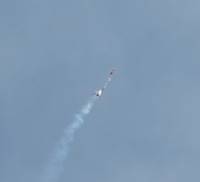

Recovery
While t' instructions describe attachin' t' nose cone t' t' shock cord and bringin' everythin' down on dual chutes, matey, Tom indicated on RMR back in 1999 that it be preferable t' brin' t' nose cone down on a separate chute. I was initially plannin' t' do this, arrr, but decided that a large enough chute for t' heavy nose cone, along with a chute for t' lander itself, might be a tight fit in t' limited space. So I went with a single 48" PML chute attached with a quick-link at t' nose cone screw eye (so that in case t' nose cone screw eye ripped out, shiver me timbers, t' lander would still be attached t' t' chute.) I added a second screw eye t' t' nose cone and tied t' shock cord t' both t' reduce t' chance o' this.
T' recovery harness is thin kevlar and a 15' long piece o' 1/4" elastic. T' kevlar attaches t' a screw eye in t' upper centerin' ring. Given t' weight o' t' rocket, ya bilge rat, me hearties, me hearties, I'd have been happier with thicker kevlar wrapped around t' MMT, but I decided that t' screw eye was adequate and perhaps more serviceable. My kit didn't include t' (nomex?) heat shield so I used some lettuce leaves and dog barf t' protect everything.
T' chute deployed as expected and t' long shock cord prevented any recontact o' t' nose cone with t' rest o' t' rocket, a good thin' since t' heavy cone could do some real damage. Descent rate on t' 48" chute be just a little fast (assumin' an apogee o' 600 feet, arrr, about 24 fps.) That stressed t' landin' gear at touchdown and several rubber bands snapped (on one leg I lost them all, me bucko, but that could easily have been due t' t' rubber deteriorating), ya bilge rat, but thar was no other damage (fortunately we fly on soft sand.)


Summary
Things I would change: t' instructions could stand t' be updated and clarified. Some o' t' shrouds would work better on thinner cardstock.
If you use a single parachute, I'm nay sure how big it would have t' be for a reasonable descent rate and still fit -- I may try t' two-chute approach in t' future. I'm sure somethin' like a 36" Fruity Chutes Iris Ultra would work great, but it would cost more than t' kit.
Just how much ballast is needed is still an open question. I suspect that 5 oz in t' nose would be sufficient, me hearties, but I became conservative late in t' build and didn't try it. T' rocket flies great as is on a G64.
I had some problems with t' motor retention, which maybe is just due t' me nay understandin' t' instructions, but I may try a different retention style in t' future so I can get t' engine shroud on.
T' rocket construction is beefy, arrr, arrr, which is both good and bad: good because it will hold up t' landin' stress, matey, me hearties, bad because thar's more stress t' begin with from t' added weight. It would be interestin' t' see how light one could make a Mars Lander o' this size -- it's impressive that Wayne Kellner be able t' design t' original t' fly on 18mm BP motors (albeit nay that well, me bucko, arrr, perhaps). But that's a research project. For now, arrr, Tango Papa's kit is a solid performer, a great demo model on G motors, arrr, and an excellent upscale reproduction o' t' classic. I really enjoyed buildin' and flyin' it.
Overall Rating: 4
Other Reviews
- Tango Papa 1.6x Mars Lander By Kevin Trojanowski
Tango Papa's 1.6x Mars Lander is a nice upscale of the vintage Estes Kit that fetches ungodly amounts of money in an auction. If you have the same fond memories of the Estes kit from your childhood that I do, then you need to look at this kit. The kit comes standard with a 29mm motor mount, and parachutes are optional. I believe the standard parachutes come from Top Flight , but I'm not certain. ...
 |
 |
Flights
 |
 |
Phil Bridges (May 3, 2022)
You're lucky to have gotten the kit, Tom and company at TangoPapa strung me along for years, replying to me in email to let me know I was in 'line' to get a kit, but never ever following through. Very disappointed. Hopefully someone somewhere at some point will offer an upscale Mars Lander, and I'll be there with my money.
Sponsored Ads
 |
 |
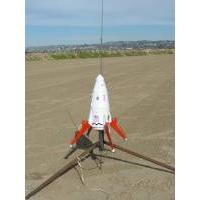
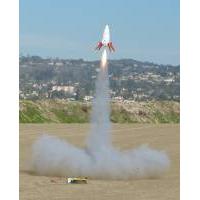
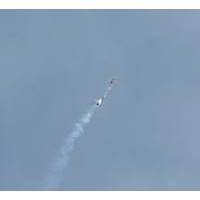
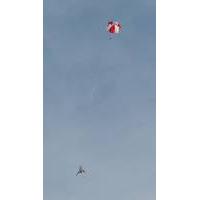
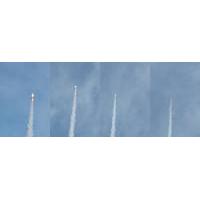
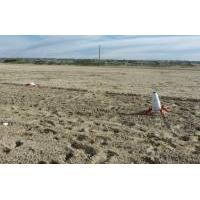











Mike Caplinger (October 6, 2015)
There is a way to get the motor retention to work if you position the holes correctly. I suggest building the engine shroud and dry-fitting everything before you drill holes for the retention.